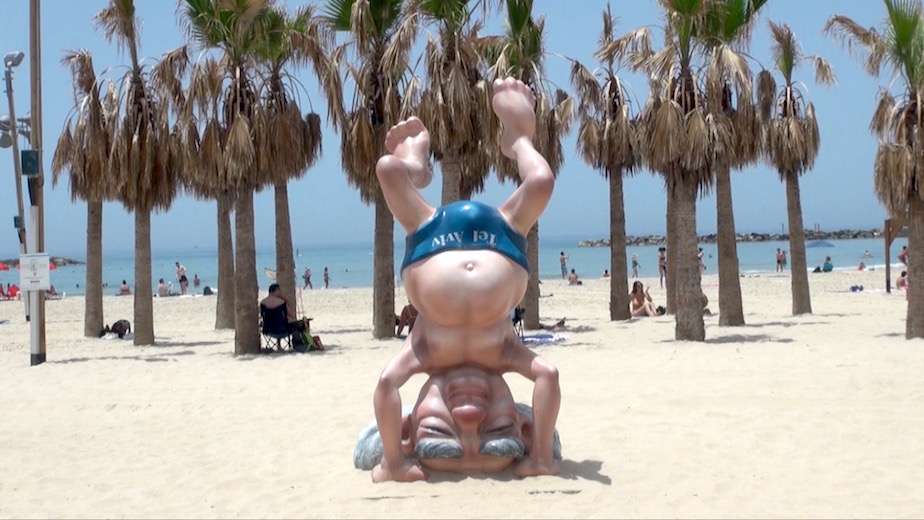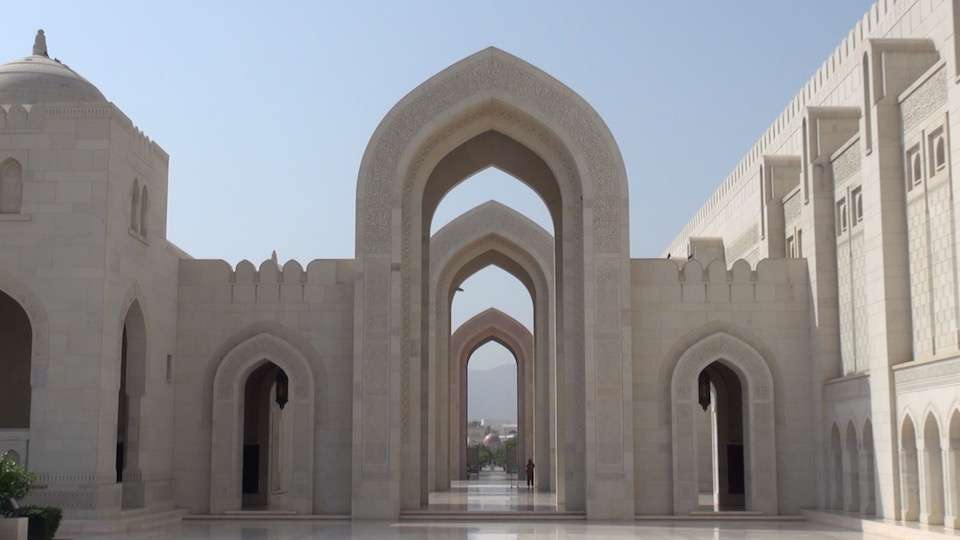The Old City of Jerusalem
The Old City of Jerusalem is a holy place to three religions – Islam, Christianity, and Judaism. The City of Gold, as it has come to be known in Hebrew.
Located in the Judean Mountains between the Mediterranean Sea and the Dead Sea, modern Jerusalem has grown far beyond the Old City’s boundaries. The walled area of Jerusalem, which until the late nineteenth century formed the entire city, is now called the Old City and became a UNESCO World Heritage Site in 1981, and is on the list of World Heritage in Danger.
It is the holiest city in Judaism and the spiritual center of the Jewish people since the 10th century BCE, the third-holiest in Islam and is also home to a number of significant and ancient Christian landmarks. A city with a very violent past, fiercely contested between Christianity and Islam during the brutal Crusade era.
During its long history, Jerusalem has been destroyed at least twice, besieged 23 times, attacked 52 times, and captured and recaptured 44 times. The part of Jerusalem called the City of David was settled in the 4th millennium BCE. In 1538, walls were built around Jerusalem, today those walls define the Old City, which has been traditionally divided into four quarters—known since the early 19th century as the Armenian, Christian, Jewish, and Muslim Quarters.
According to the Biblical tradition, King David conquered the city from the Jebusites and established it as the capital of the United Kingdom of Israel, and his son, King Solomon, commissioned the building of the First Temple. These foundational events, straddling the dawn of the 1st millennium BCE, assumed central symbolic importance for the Jewish people.
The holiness of Jerusalem in Christianity, was reinforced by the New Testament account of Jesus’s crucifixion there.
In Sunni Islam, Jerusalem is the third-holiest city, after Mecca and Medina. In Islamic tradition in 610 CE it became the first qibla, the focal point for Muslim prayer (salat), and Muhammad made his Night Journey there ten years later, ascending to heaven where he speaks to God, according to the Quran.
As a result, despite having an area of only 0.9 square kilometres (0.35 sq mi), the Old City is home to many sites of religious importance, among them the Temple Mount and its Western Wall, the Church of the Holy Sepulchre, the Dome of the Rock, the Garden Tomb and al-Aqsa Mosque.
The periods of Jewish sovereignty in the city’s history are important to Israeli nationalists (Zionists), who claim the right to the city based on Jewish descent from the Israelite Kingdom of Judah, of which Jerusalem was the capital. The periods of Islamic, Christian and other non-Jewish periods of the city’s history are important to Palestinian nationalists, who claim the right to the city based on modern Palestinians’ descent from many different peoples who have lived in the region.
Jerusalem has been sacred to the Jews since King David proclaimed it his capital in the 10th century BCE. Jerusalem was the site of Solomon’s Temple and the Second Temple. Although not mentioned in the Torah / Pentateuch, it is mentioned in the Bible 632 times.
Today, the Western Wall, a remnant of the wall surrounding the Second Temple, is a Jewish holy site second only to the “Holy of Holies” on the Temple Mount itself. Synagogues around the world are traditionally built with the Holy Ark facing Jerusalem, and Arks within Jerusalem face the Holy of Holies. Daily prayers are recited while facing towards Jerusalem and the Temple Mount. Many Jews have “Mizrach” plaques hung on a wall of their homes to indicate the direction of prayer.
Christianity reveres Jerusalem for its Old Testament history, and also for its significance in the life of Jesus. According to the New Testament, Jesus was brought to Jerusalem soon after his birth and later in his life cleansed the Second Temple. The Cenacle, believed to be the site of Jesus’ Last Supper, is located on Mount Zion in the same building that houses the Tomb of King David.
Another prominent Christian site in Jerusalem is Golgotha, the site of the crucifixion. The Gospel of John describes it as being located outside Jerusalem, but recent archaeological evidence suggests Golgotha is a short distance from the Old City walls, within the present-day confines of the city. The land currently occupied by the Church of the Holy Sepulchre is considered one of the top candidates for Golgotha and thus has been a Christian pilgrimage site for the past 2000 years – the most holy Christian spot in the world.
Jerusalem is the third-holiest city in Sunni Islam. The city’s lasting place in Islam, is primarily due to Muhammad’s Night of Ascension (c. CE 620). Muslims believe Muhammad was miraculously transported one night from Mecca to the Temple Mount in Jerusalem, whereupon he ascended to Heaven to meet previous prophets of Islam.
Despite efforts to maintain peaceful religious coexistence, some sites, such as the Temple Mount, have been a continuous source of friction and controversy. The Temple Mount is the third most important site in Islam (and the most important in Judaism). Jews often pray at the Western Wall (Hakotel Hamaaravi) in the Old City on the side of the Temple Mount, which is part of the outer retaining wall of the Temple, built 2000 years ago. The Temple Mount also continues as an important religious and educational centre for Muslims to the present. It is crowned by the magnificent Dome of the Rock, which stands on or near the site of the ancient Jewish Temples. It is accessible at only specific times. Encompassing over 35 acres, the Temple Mount houses the Al-Aqsa Mosque (The Far Mosque), the point from where the prophet of Islam, Mohammad is believed to have ascended to heaven, and the Qubbat Al-Sakhra (Dome of the Rock) – located in the middle of the sanctuary opposite of the Al-Aqsa Mosque, probably the most known landmark of Jerusalem with its golden dome and octagonal blue walls that are adorned with Arabic calligraphy of Koranic verses. The interior of both the Dome of the Rock and the Al-Aqsa Mosque are closed to non-Muslims.
- Non-Muslims are not allowed on the Temple Mount (Noble Sanctuary) during times of Muslim prayer.
- During Shabbat and Jewish holidays, one should not publicly use electronic devices or smoke in any synagogue, at the Western Wall, or in any ultra-Orthodox (“hareidi”) Jewish neighborhood. Driving in orthodox Jewish neighborhoods on Shabbat is disallowed and roads may be closed off. This also goes for most Jewish holidays.
- During Ramadan, eating, drinking or smoking in the streets of Muslim areas is culturally insensitive although tourists are rarely interfered with.
In 1917 after the Battle of Jerusalem, the British Army captured the city. The League of Nations, through its 1922 ratification of the Balfour Declaration, entrusted the United Kingdom to administer the Mandate of Palestine and help establish a Jewish homeland in the region. As the British Mandate of Palestine was expiring, the 1947 UN Partition Plan recommended “the creation of a special international regime in the City of Jerusalem, constituting it as a corpus separatum under the administration of the United Nations.” However, this plan was rejected by the Arabs, and at the end of the 1948 Arab-Israeli War, Jerusalem found itself divided between Israel and Jordan (then known as Transjordan).
The ceasefire line established through the 1949 Armistice Agreements between Israel and Jordan cut through the center of the city from 1949 until 1967, during which time western Jerusalem was part of Israel and eastern Jerusalem was controlled by Jordan. In 1949, West Jerusalem became Israel‘s capital. After the 1967 war, all of Jerusalem was claimed by Israel as its capital.
The Jewish quarter was completely re-built in 1969 after the 1967 Arab-Israeli War. It still holds many ancient masterpieces such as the Cardo (700 BC), Burnt House (70 AD), and Western Wailing Wall (50 BC). Zion Mountain with several monuments including: Hagia Maria Sion Abbey (Dormision Church), Schindler’s Tomb, Chamber of the Holocaust (Martef HaShoah), David’s Tomb and Room of the Last Supper.
All branches of the Israeli government are located in Jerusalem, including the Knesset (Israel‘s parliament), the residences of the Prime Minister and President, and the Supreme Court. The international community rejected the annexation as illegal and treats East Jerusalem as Palestinian territory occupied by Israel. The international community does not recognize Jerusalem as Israel‘s capital, and the city hosts no foreign embassies.
Israelis and Palestinians both claim Jerusalem as their capital, as Israel maintains its primary governmental institutions there and the State of Palestine ultimately foresees it as its seat of power; however, neither claim is widely recognized internationally.







